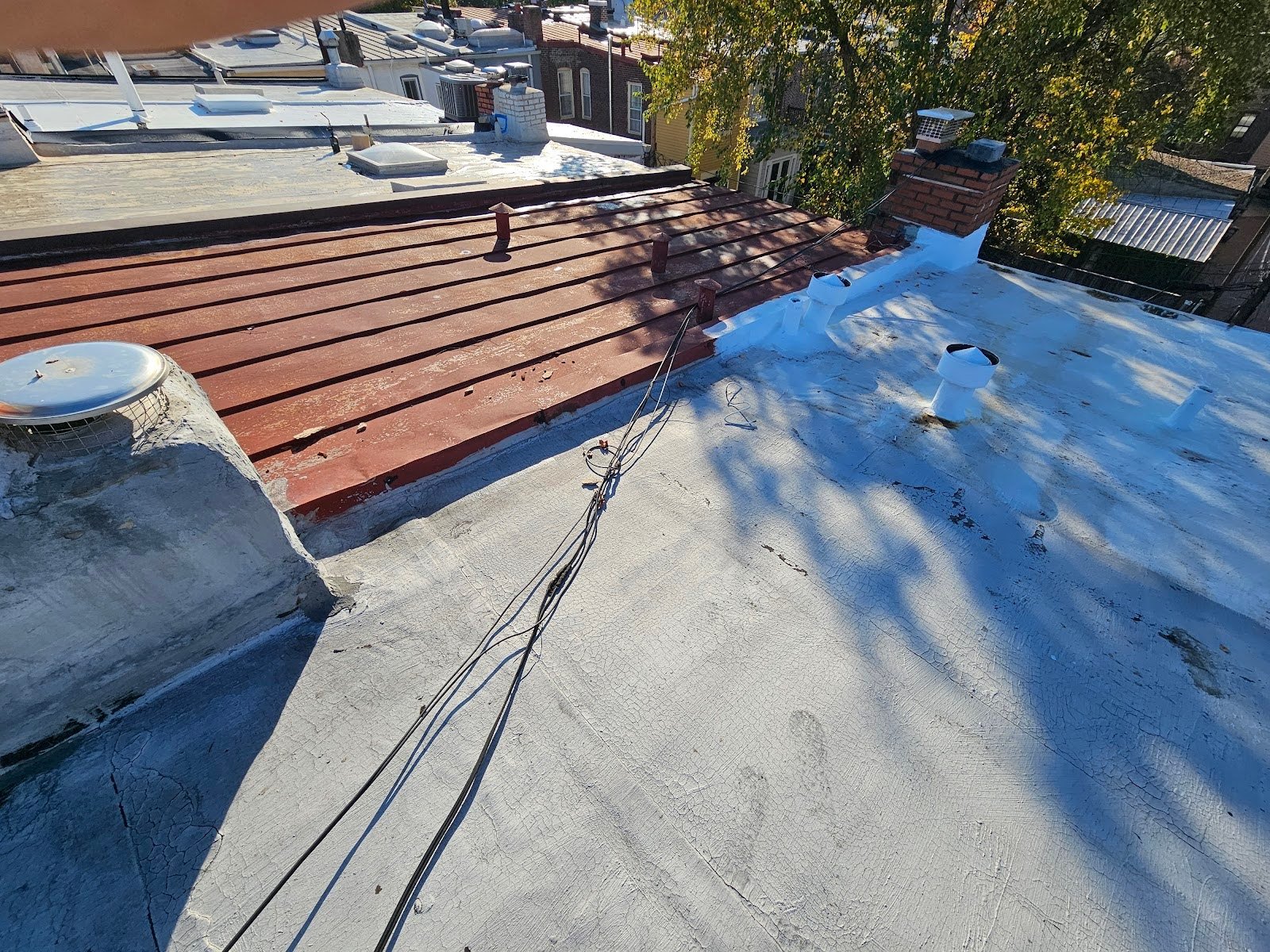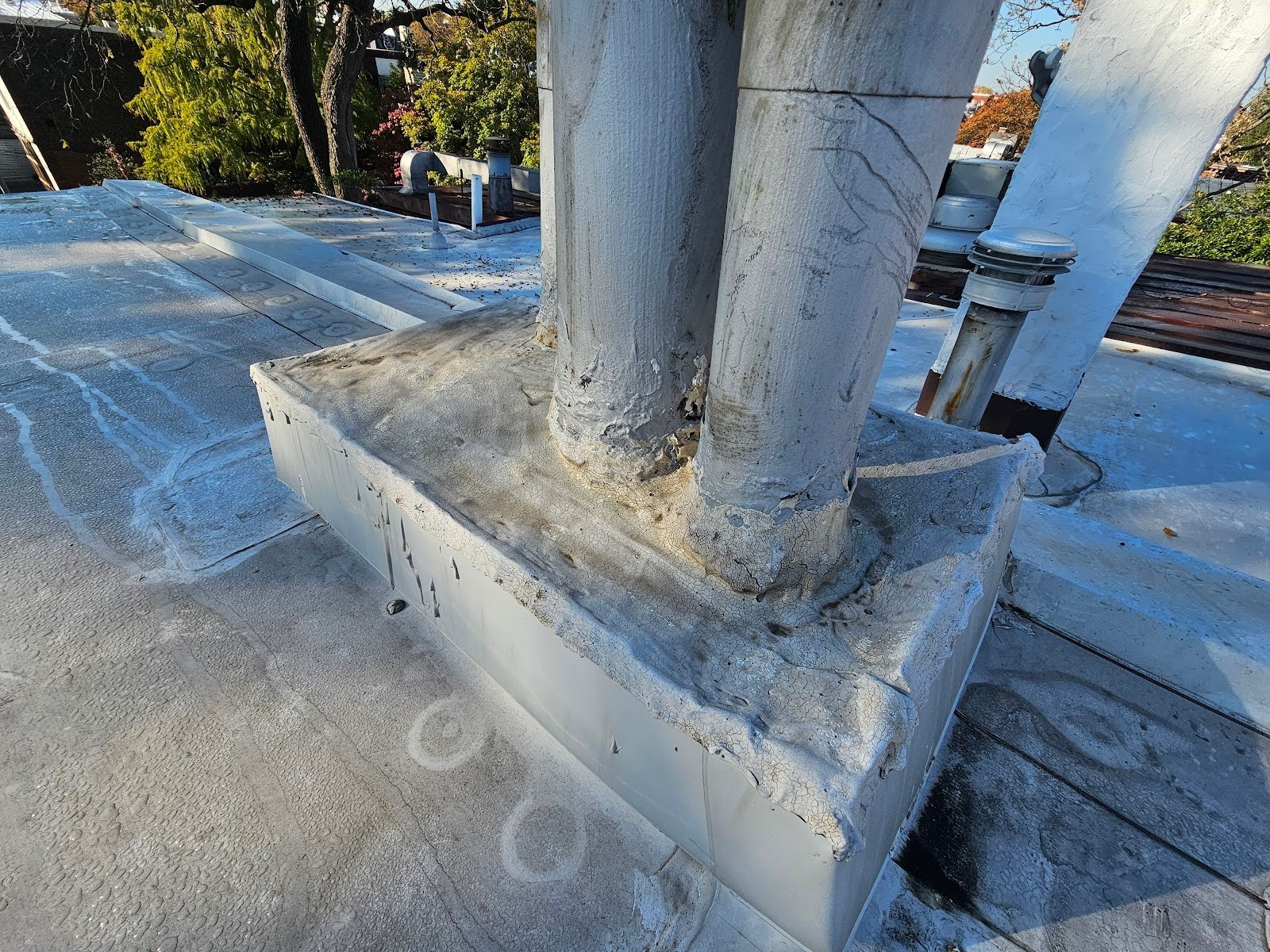Failing Roof Pitch Pockets Could Be Causing Roof Leaks
Often, here on our blog and on our website, we look at roof systems and some of the finer details of those systems like the smaller components that make those systems work together. Today we’re going to look at a particular type of penetration seal detail called a pitch pocket. To put things in really simple terms, pitch pockets are metal trays formed around a penetration through the roof system or membrane that are filled around the penetration with a sealant to prevent leakage through the hole or opening at the penetration. A picture of a pitch pocket used in a cold process modified bitumen roof system follows below.
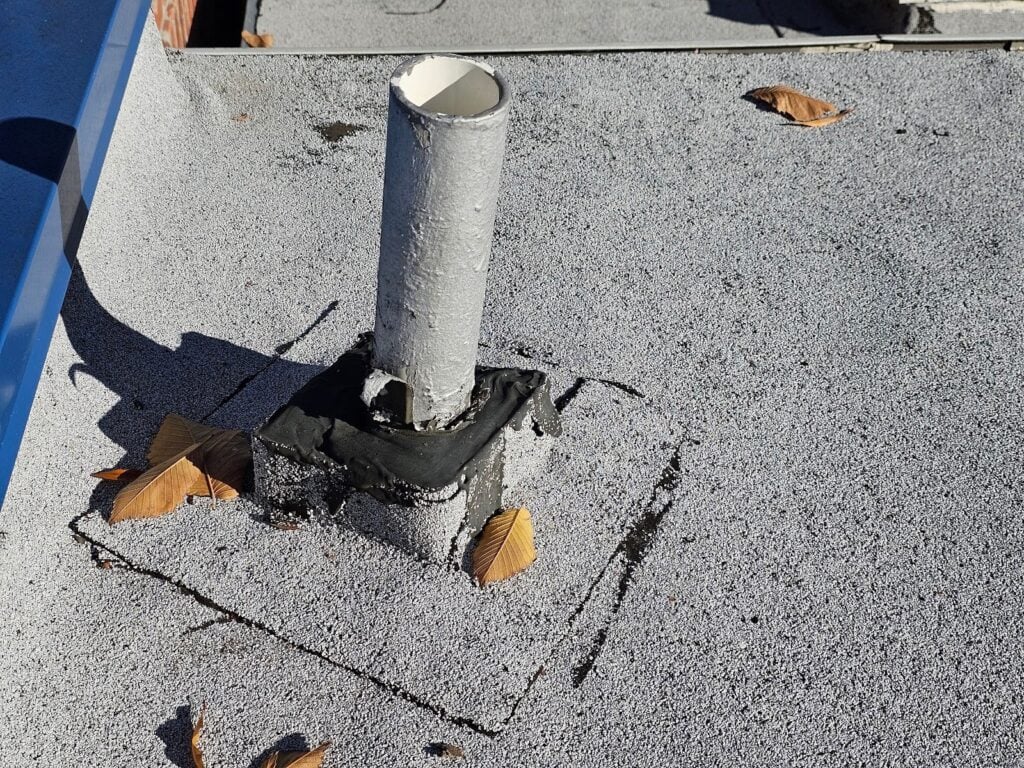
It’s important that we also mention that there are several problems with this installation and the overall installation of this root system. This is a cold process application which means that unlike torch down modified bitumen membranes, this type of membrane was applied with an integral adhesive on the underside of the roll membrane.
Unfortunately, the pipe itself was painted, at the exterior side walls of the pipe with a silver paint, and aluminum paint type application. The polymer portable sealant used to fill the pitch pocket has adhered to that paint but the paint has the laminated from the substrate. That’s problematic because it now allows for leakage into an under the pitch pocket.

The reason that this pitch pocket is actually failing though isn’t because of a problem with the materials or installation of the pitch pocket itself. The problem actually lies in the preparation before installation of the pitch pocket. The same contractor should have done both the installation and the preparation properly. Of course the preparation happens before the installation of the new pitch pocket, but here the preparation was not done fully or completely.
The previous contractors should have simply scraped the sidewalls of the plumbing vent pipe thoroughly before installation of the new pitch pocket portable sealant. If they had done that then the portable sealant would have made proper adhesion, bonding, to the sides of the pipe. Instead, the portable sealant would have adhered tightly to the sidewalls of the pre-existing pipe. That pipe was an old plumbing vent pipe and had been coated previously with a fiber modified aluminum roof paint.
That roof paint for a time, probably had okay adhesion, but now is at the point or stage of its life cycle that it has deteriorated to the point that it no longer has full adhesion to the substrate. When that aluminum paint deteriorated and delaminated from the sidewalls of the pipe, the portable sealant which was part of the pitch pocket also delaminated.
Now there’s a potential entry point for water and a potential area of leakage. Because now, water can get down between the sidewalls of the pipe and the old aluminum paint which is now peeled away from the sides of the pipe. Even though they went through the trouble of installing this expensive and tedious pitch pocket, it was not good enough because they didn’t prep the existing substrate enough to get sufficient adhesion.

The picture above and a picture below both show two different angles of the same area at the base of the pipe where the pipe comes through the pitch pocket. You can see that the aluminum paint is still attached to the area of the pourable sealant which has delaminated and the aluminum paint is also still partially attached to the sidewalls of the piping.
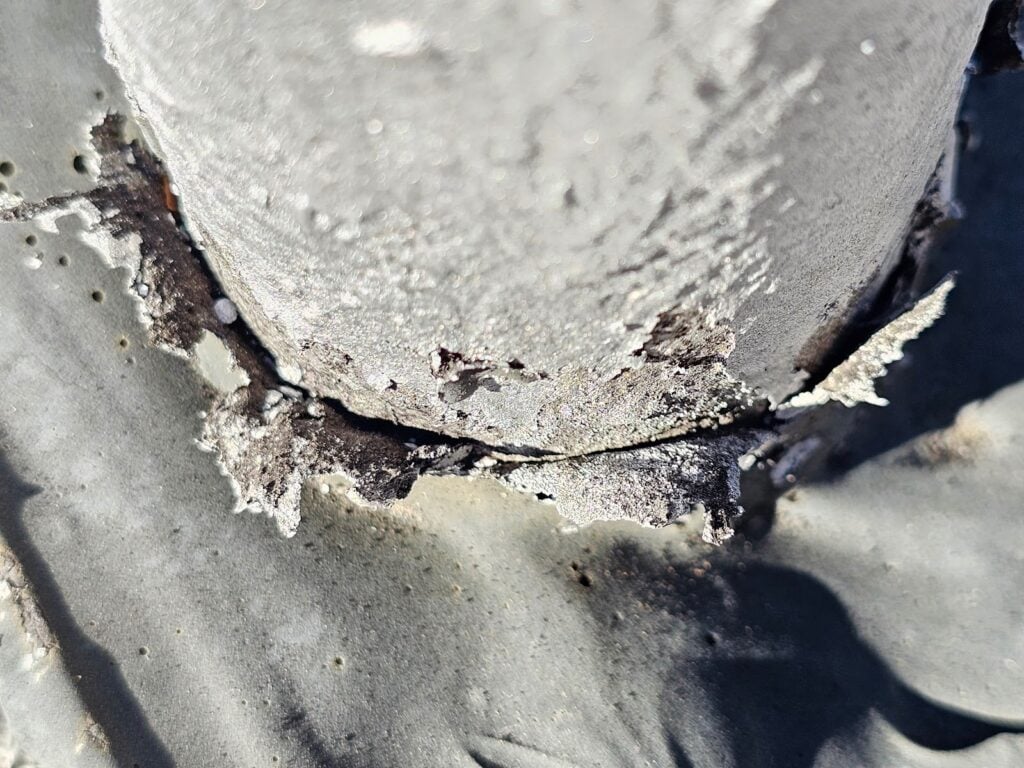
As we mentioned, since this is a cold process type application, at the modified bitumen roof membrane, there are other problems related to separation and delamination of the overlaid base flashing below the pitch pocket.
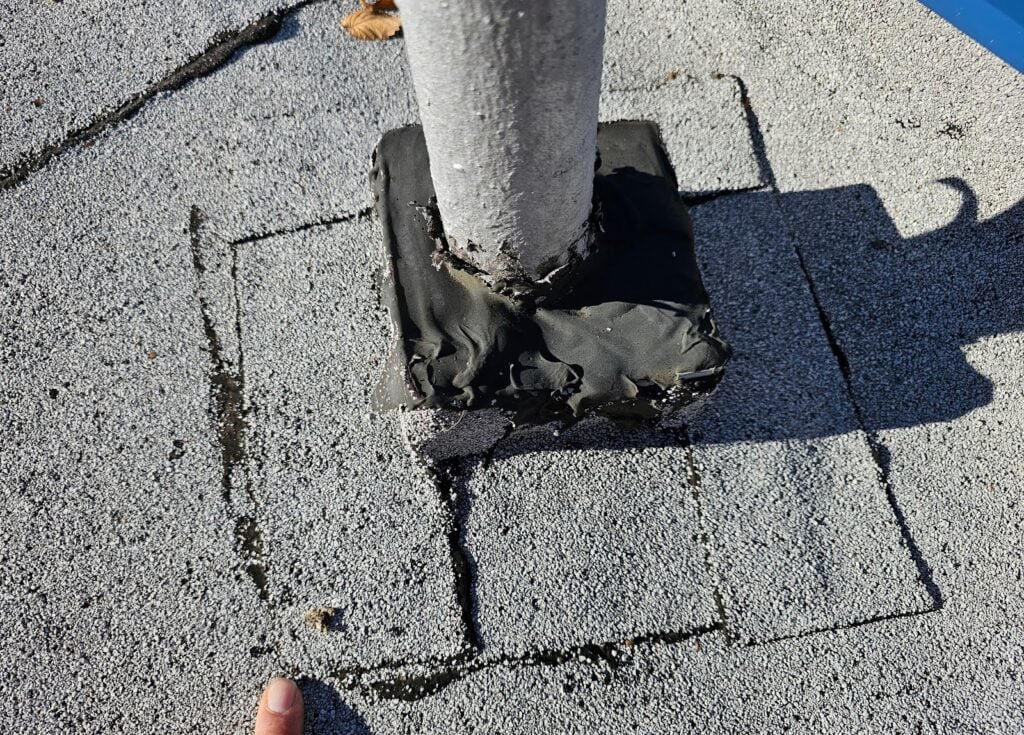
In general, for most new roof installations, our company recommends more modern systems such as TPO or other single ply roof membrane modified bitumen roofing, by itself is a relatively strong and decent system that in some cases works better with complicated configurations. Here though, where the previous contractor used a cold process system, there are issues with proper adhesion between the overlapping layers of the roll roofing.
We provide this information here on our blog, and our website, to help our customers and future clients, and we recommend every building owner in DC who values the longevity of their roof (and their investments) and building use a contractor who values the simple and important principles of proper roof construction like Dupont Roofing DC. Our company specializes in flat roofing here in Washington DC and we’re happy to help building owners of almost all types.
Learn more about our company and the proper techniques of working with roofing on historic buildings in Washington DC here on our blog at DupontRoofingDC.com, and you can call us at (202) 840-8698 and email us at dupontroofingdc@gmail.com. We are happy to help and at least talk through options.

